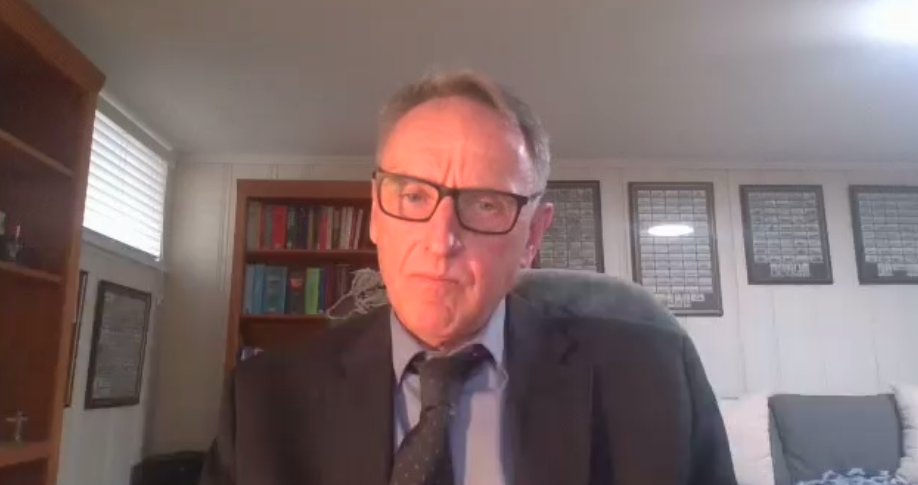
The Department of Energy’s consent-based siting program to find a home for stranded spent nuclear fuel will not include talks with potential host states any time soon, a senior agency official said Wednesday.
“At the right time we will start to engage with the states but now is not the right time.” Paul Murray, DOE’s deputy assistant secretary for spent fuel and waste disposition said Monday in a moderated question and answer session with the American Nuclear Society.
Murray, who has been on the job about five months following a 44-year career in industry, said DOE’s consent-based siting process is now focused on talking to “members of the general public” who tend to think of nuclear waste as the “green drums of goo on the Simpsons.”
Murray appeared by video to speak with consultant Steve Nesbit, a longtime nuclear policy hand and past president of the American Nuclear Society. It was one of Murray’s first public, long-form chats with industry and nuclear-energy advocates since he joined the Office of Nuclear Energy in October.
By the time Murray got settled at the Department of Energy, New Mexico and Texas had already banned storage of spent nuclear fuel in their territories. The federal government so far has not challenged those laws, which some in the industry say are preempted by U.S. law.
Amid that backdrop, DOE has limited its work on spent fuel storage to the design of an interim storage facility that Murray on Wednesday said will notionally be ready to open in the late 2030s, provided Congress changes federal law to allow construction of such a facility before the opening of a permanent deep geologic repository, such as the one proposed but never built at Yucca Mountain in Nye County, Nev.
Sometime “this spring,” the DOE-owned interim storage facility should reach the project management milestone of CD-0, Murray said. “So at that point we’ll have a concept design, rough-order-of-magnitude costs, everything we need.”
Reaching CD-0 requires approval from the deputy secretary of energy. Once the deputy secretary approves, “that’s the start of the project,” Murray said. After that, Murray’s office could request funding for the project and, if all goes as planned, reach the CD-1 milestone “later this year,” Murray said.
At CD-1, Murray said, DOE will begin to consider “what will the design look like? Is it a big parking lot? Is it underground? Is it in the air? Is it in a building?”
Meanwhile, Murray said that he generally supported moving on from Yucca Mountain.
Asked by Andrew Zach a Republican staffer on the Senate Environment and Public Works Committee, whether DOE supported the Environmental Protection Agency updating its generic repository standards to help lay the foundation for a non-Yucca repository, Murray would not pledge DOE’s support but said that such a plan “fits in almost exactly with where I am trying to take the program.”
Editor’s note, March 11, 2024, 1:57 p.m. Eastern time. The story was corrected to show that the deputy secretary of energy approves the CD-0 milestone.